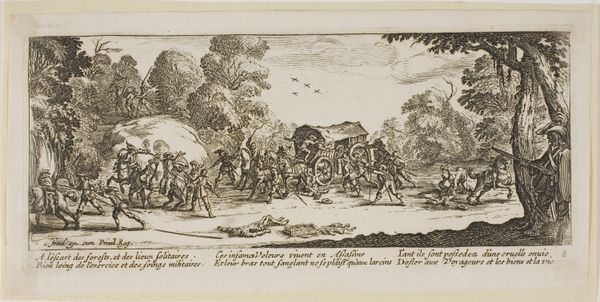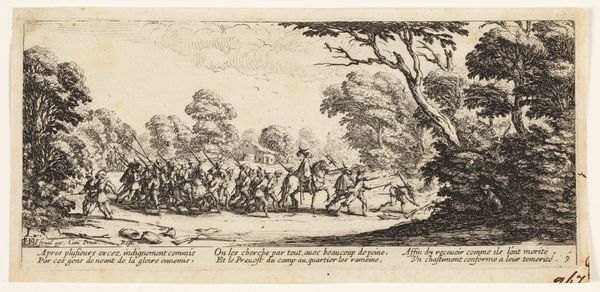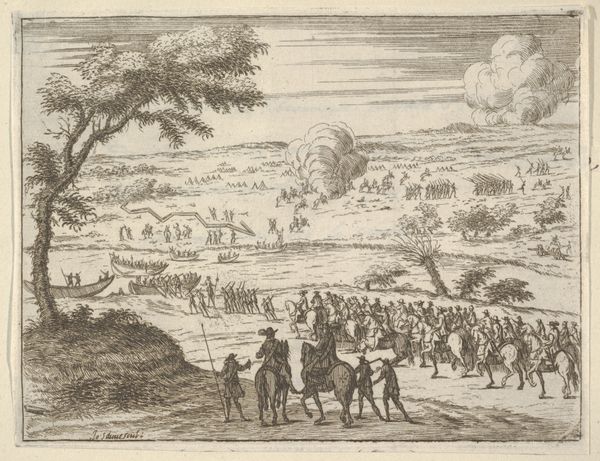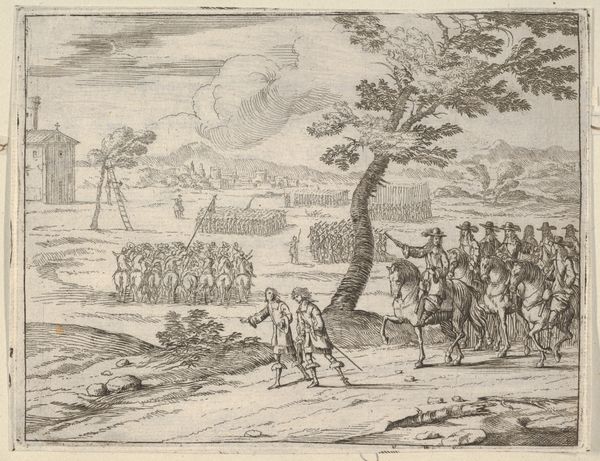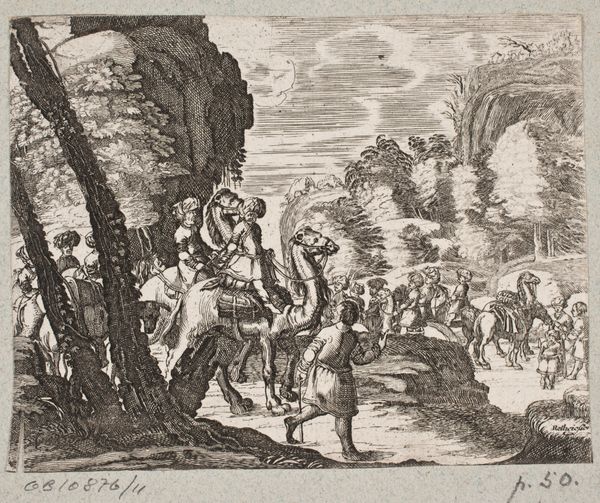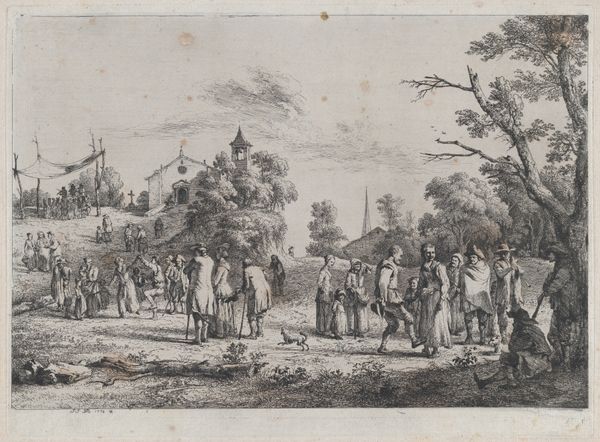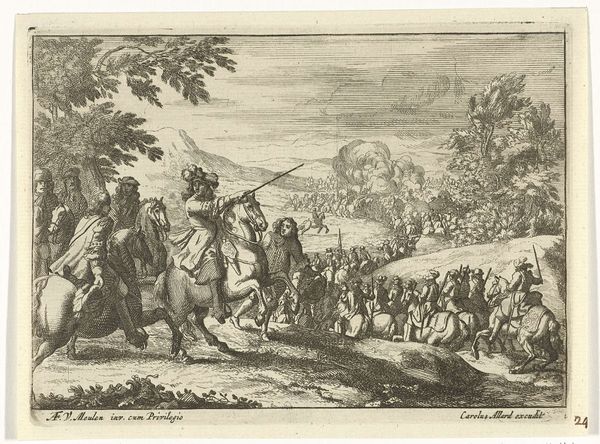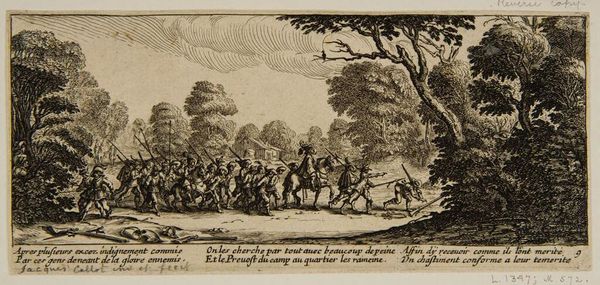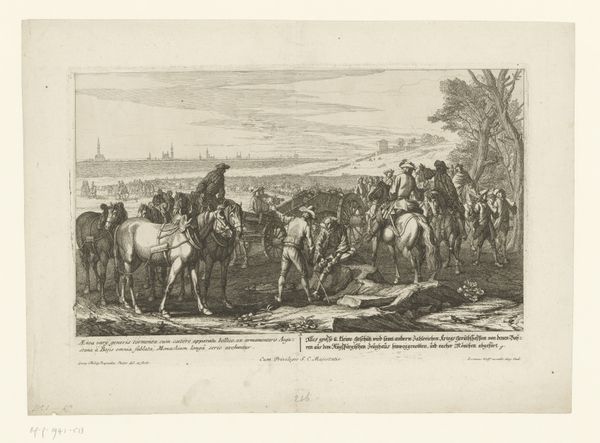
drawing, print, etching, ink, engraving
#
drawing
#
narrative-art
#
baroque
# print
#
etching
#
landscape
#
figuration
#
ink
#
history-painting
#
engraving
Dimensions: 83 mm (height) x 188 mm (width) (plademaal)
Curator: This piece, titled "En diligence angribes," meaning "The Stagecoach is Attacked," was created by Jacques Callot around 1633. It's an etching, using ink to bring incredible detail to the scene. My immediate sense is chaos and tension; the fine lines build a palpable atmosphere of threat. Editor: Indeed. The technical skill is evident – just look at the way Callot uses etching to create those densely packed figures. It’s not just about the technical though, this scene represents real-world disruptions: poverty, violence, and unequal access to safety. Curator: Precisely. Examining the means of its production, as a print, it's likely meant for wider circulation beyond the elite. This artwork provides a visual record of the frequent stagecoach robberies occurring at the time. The bandits are rendered in such detail that we can see their crude weapons and expressions of greed, revealing a commentary on the societal underbelly that enabled such behavior. Editor: Callot's technique certainly contributes to the emotional impact. The way he portrays the victims versus the attackers suggests a definite social commentary. Consider, too, how the violence becomes normalized, replicated, consumed in an almost mechanical way via the very process of printmaking itself. What structures facilitated these inequalities, allowing such blatant banditry? Who benefits? Curator: Well, one could look at the supply chains, if you will. This image shows, in material terms, an issue of wealth distribution as something affecting day-to-day movement, and clearly depicts issues in the application of mercantile routes and means of transferral of goods at that time. Editor: That tension, then, between commerce and the human cost of wealth consolidation… I think Callot implicates us, the viewers of this dramatic scene. Does it provide entertainment or invoke genuine reflection and action? How does viewing this etching implicate one as a consumer of violence itself? Curator: Interesting questions, to be sure. Overall, viewing "En diligence angribes", we're presented with not only an arresting scene of an attack but a tangible historical object, shedding light on both the material conditions of 17th century travel and the methods and means employed in its visual rendering. Editor: It is important for us to realize how relevant it remains in the face of the myriad forms that exploitation and power imbalances take across the globe even now.
Comments
No comments
Be the first to comment and join the conversation on the ultimate creative platform.
